FREE Standard Shipping On All Orders $100 or More!*
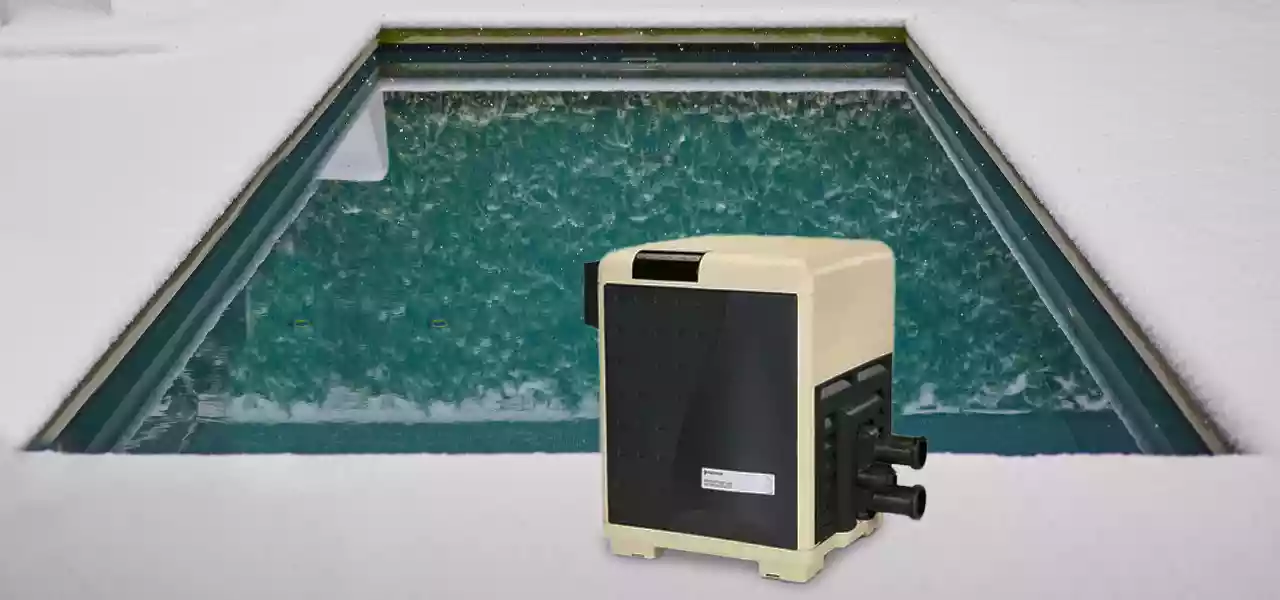
Pentair Pool Heater Troubleshooting Guide
Are you experiencing issues with your Pentair pool heater? Don't stress! Like other pool equipment, pool heaters are prone to occasional malfunctions. Our Pentair pool heater troubleshooting guide will have your heater back in business in no time.
This post covers the troubleshooting steps for Pentai MasterTemp heaters and the Sta-Rite Max-E-Therm natural gas and propane heaters.
Pentair MasterTemp and Sta-Rite Max-E-Therm Heaters
Traditional gas heaters ignite horizontal burners at the bottom of a square combustion box. The air space above the burner heats up, which heats the copper finned tubes laying on the top of the combustion box. The water circulating through the copper heat exchanger tubes absorbs the heat, and exits the heater a few degrees warmer than when it entered. 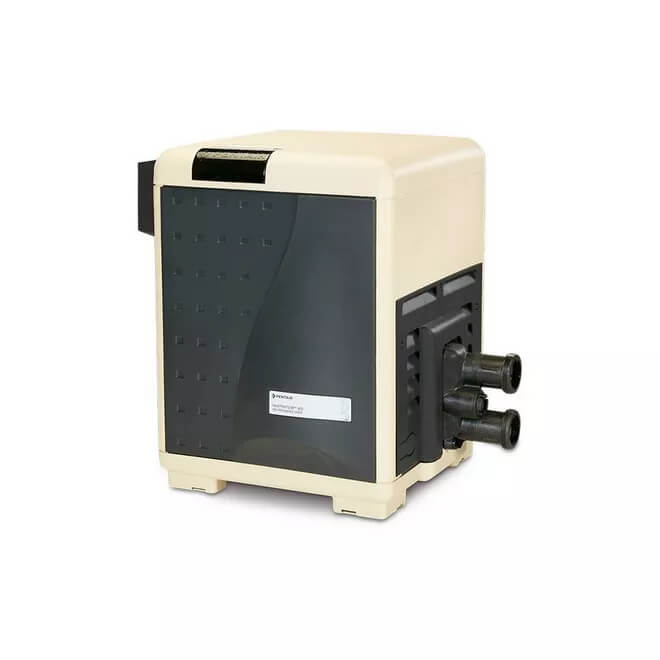
By contrast, the Sta-Rite Max-E-Therm pool heater design, now adopted by Pentair, has stacks of circular heat exchanger tubes, surrounding a combustion cylinder. Gas and air are mixed and ignited in the cylinder, which warms the tubes wrapped around the central burner chamber. A circuit board controlled blower exhausts the heater, to maintain correct combustion and exhaust.
Troubleshooting the stacked exchanger type of heater is not much different than other electronic or digital pool heaters. The controls and circuit boards for the Max-E-Therm and the MasterTemp are fairly identical. Even the new MasterTemp above ground pool heater has the same design, and the same troubleshooting procedure. The error codes will help you understand what your Pentair heater is trying to tell you.
Pentair MasterTemp Error Codes:
Our Pentair MasterTemp troubleshooting guide starts with the error codes shared by both models. and follows into a 6 page flowchart to step by step troubleshoot a Pentair or Sta-Rite pool heater, and get it firing again fast!
| Code | Meaning |
|---|---|
| AGS | Automatic Gas Shutoff |
| HLS | High Limit Switch |
| PS | Pressure Switch |
| AFS | Air Flow Switch |
| SFS | Stack Flue Sensor |
| E01 | Temperature Sensor |
| E02 | High Limit Sensor |
| E03 | Thermal Fuse Error |
| E04 | Fan Sensor |
| E05 | Stack Flue Sensor |
Pentair MasterTemp Electrical Troubleshooting:
The electrical system of Pentair MasterTemp pool heaters may seem intimidating, but the following charts will walk you through any mishaps. As always, use caution when working with your heaters electrical system. Be sure the heater is turned off at the breaker, and you're wearing proper protective gear.
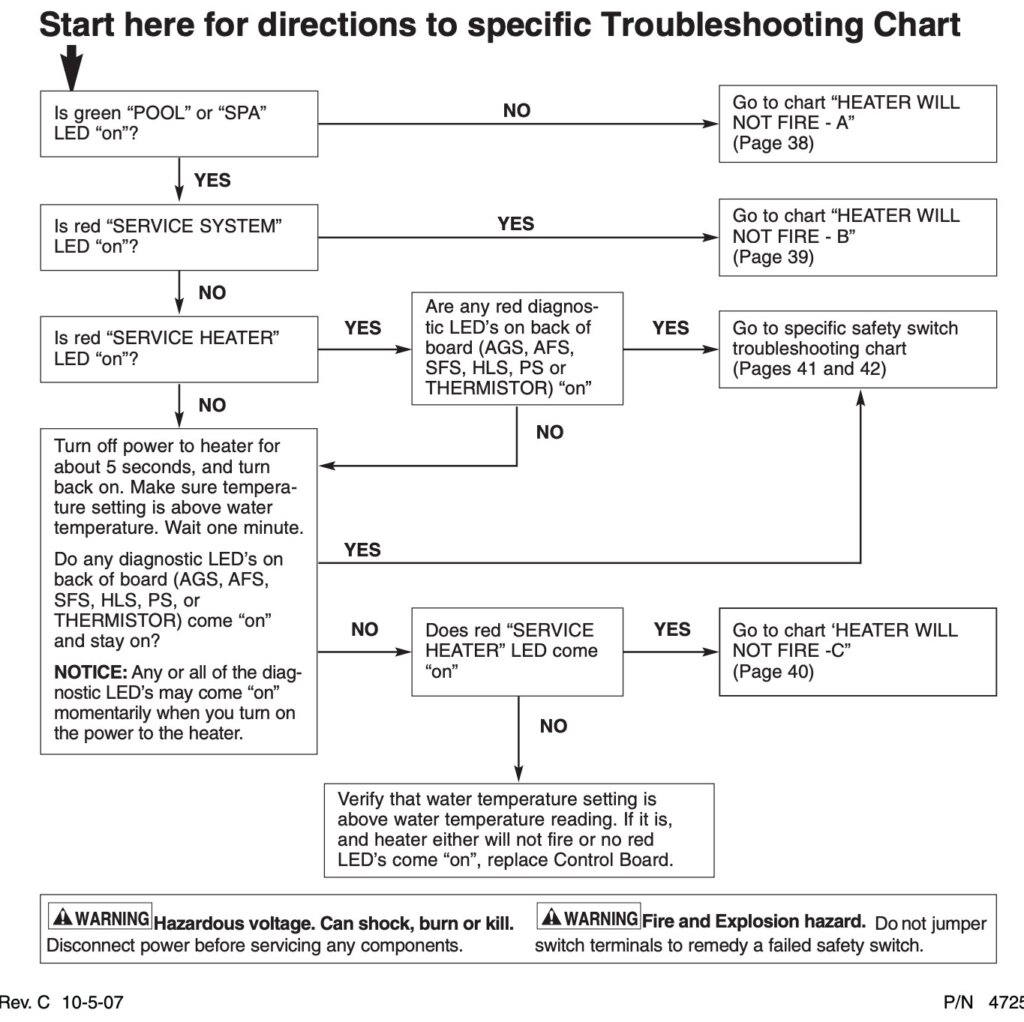
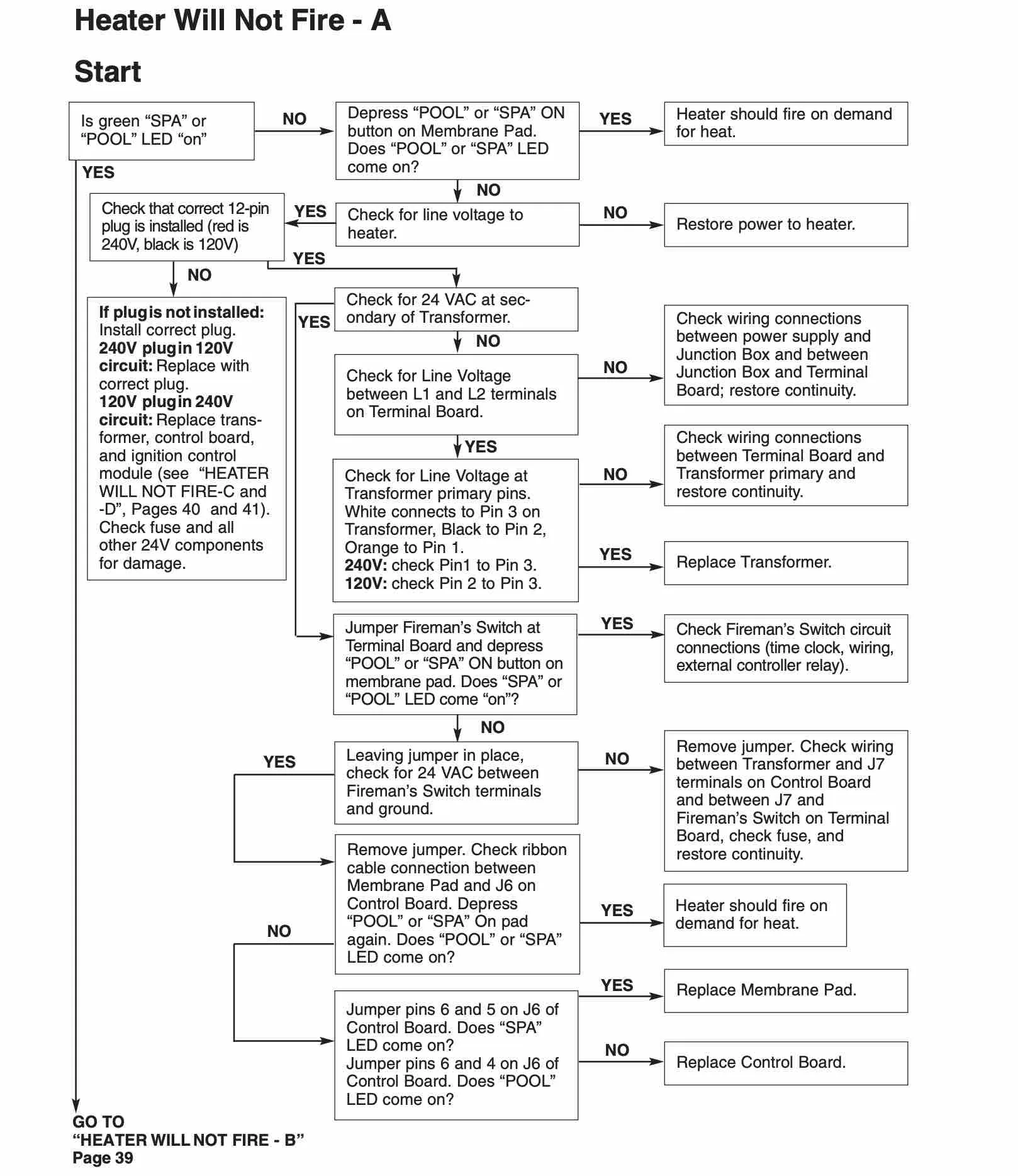

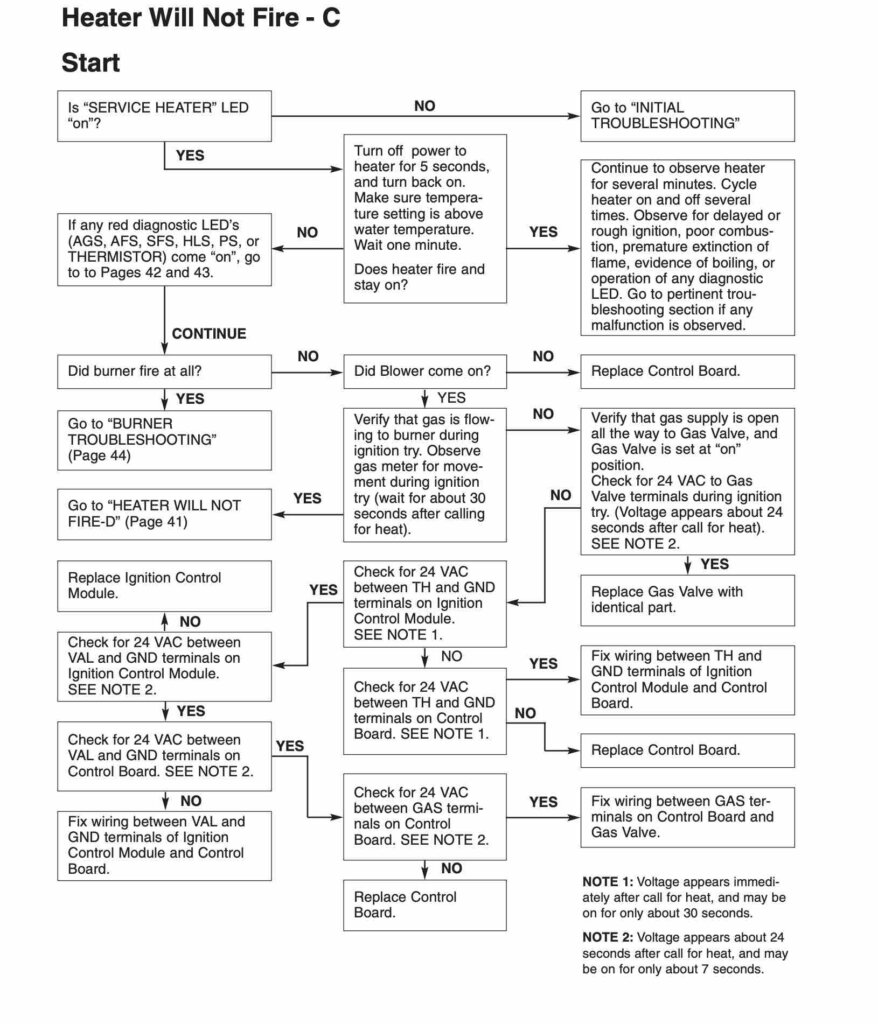
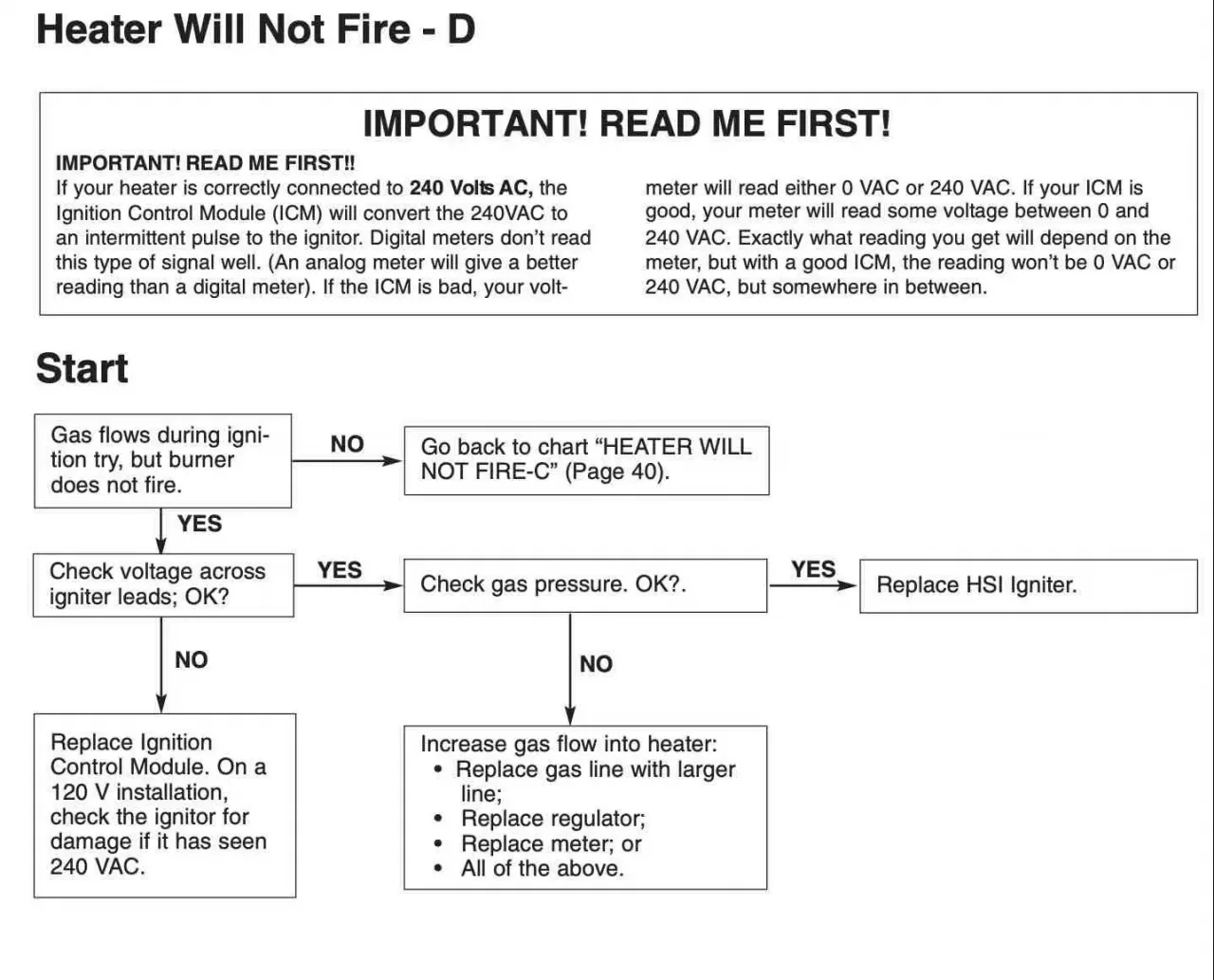
Pentair Heater Burner Troubleshooting:
The burners on this type of MasterTemp/Max-E-Therm heater are unique from previous generation pool heaters. Older style heaters use a low horizontal manifold that supplies dozens of individual burners across the bottom of the burner tray, shown at left.
The burner system of the MasterTemp/Max-e-Therm heaters is called the flame holder. The burner is located in the center of the combustion chamber, wrapped by the circular copper heat exchanger tubes. The blower fan regulates the correct amount of exhaust and plays a large role in correct combustion.
| Symptom | Cause | Remedy |
|---|---|---|
| Loud, high-pitched whine | Flame is too rich | Verify pressure tap between gas valve and blower inlet. See page 15 verify the gas regulator is -0.2" wc. Contact a qualified technician or service agency to replace the gas orifice |
| Flame is "fluttery". Exhaust may have an acrid smell, or the burner may fail to stay lit. |
Flame is too lean | See page 16 and verify the gas regulator is -0.2" wc. Contact a qualified technician or service agency to replace the gas orifice |
| Burner pulsates or surges, especially on ignition. | Exhaust vent is too long | Reduce strength of exhaust vent and/or number of elbows |
| Combustion appears normal, but the flame does not stay lit. | Flame current is not sensed | Check for wet or damaged igniter with low resistance to ground. Replace with new igniter. Verify burner flame is properly grounded. Replace ignition or control module. |
Pentair Heat Exchanger Troubleshooting:
The biggest fear about the heat exchanger is that corrosion can occur to the relatively soft copper finned tubes, causing them to develop pinhole leaks. Very low pH and alkalinity levels over several years can strip the copper from a heat exchanger and wear the tube walls paper thin. Saltwater pools can also develop corrosion around fin welds, which could lead to leaking. Cupro Nickel heat exchangers can be used for much greater resistance to the effects of salt water corrosion.
Leaking heat exchangers are often confused with sweating or condensating heat exchangers. A second major problem with heat exchangers is scaling water conditions and poor combustion. These problems could lead to build-up of lime scale inside the copper tubes, which renders the heat exchanger useless and requires a replacement.
| Symptom | Cause | Remedy |
|---|---|---|
| Boiling in heat exchanger. Could be accompanied by "bumping" noises. |
Low water flow to heater. Heat exchanger unplugged. Bypass valve stuck open. Thermal governor stuck closed. |
Service pump and/or filter. Service heat exchanger. Correct water chemistry. Service bypass valve. Replace thermal governor. |
| Seating | Thermal governor failed. | Replace thermal governor. |
Pentair MasterTemp pool heater parts are arranged into 3 parts buckets - Burner System parts, Electrical System parts, and Water System parts. The same is true for the StaRite Maxetherm heaters.
Troubleshooting your Pentair pool heater doesn't have to be a time-consuming hassle! Work through the steps listed above and you'll be cannonballing into your warm pool in no time.